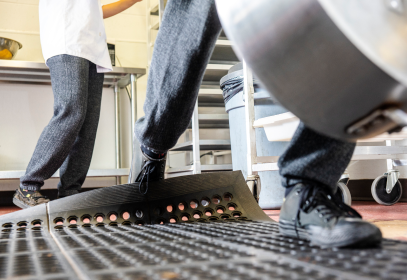The first such strategy is to select the highest risk areas and establish a set number of swabs very close to that area, followed by a moving of swabs away from those high risk areas towards areas deemed lower risk.
Remember that the swab schedule and site location list are required tools for the program, and can be used to plan ahead on when sites are going to be swabbed in the future.
Effective environmental monitoring, trending analysis and training on monitoring in addition to careful follow up where risk is identified is also an example of a culture of safety and quality in the facility, and can be used as an example when demonstration of a culture of safety and quality are requested.
In our next episode, we are going to look at the special example of swabbing programs in an FSIS regulated facility which is often different from the swabbing programs we have described in this video series so far.
Thank you for watching. For free downloads to accompany this video series, visit the free training videos & resources page of our website.
Subscribe to our YouTube channel or follow us on LinkedIn to be notified of new educational food safety resources.








